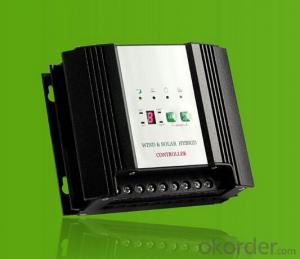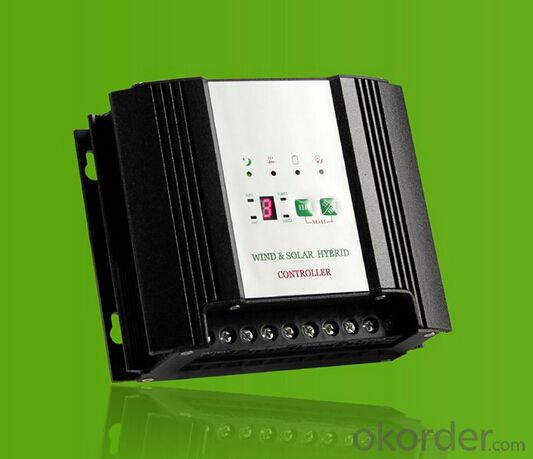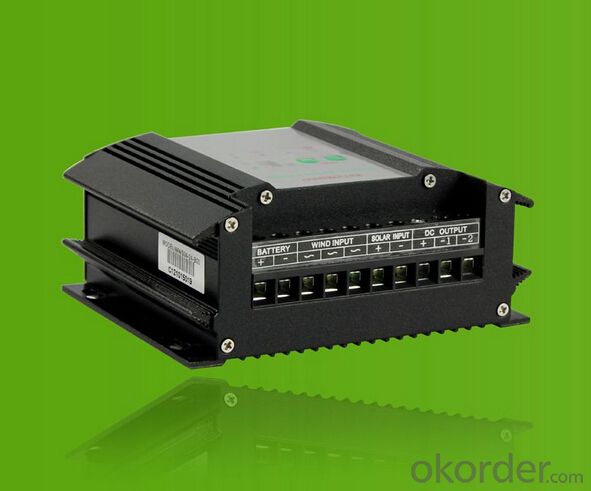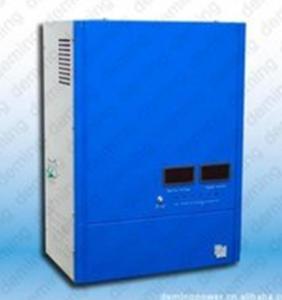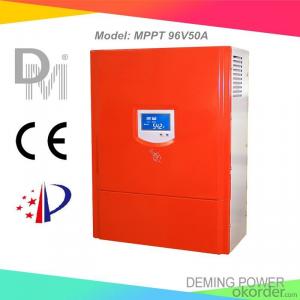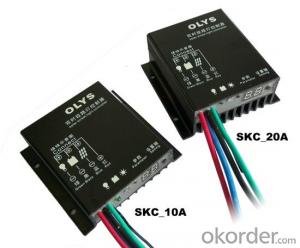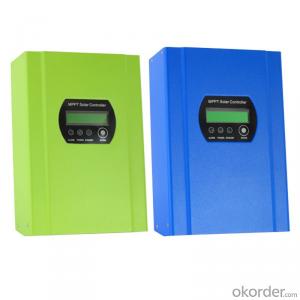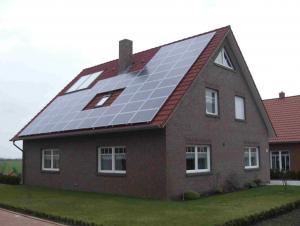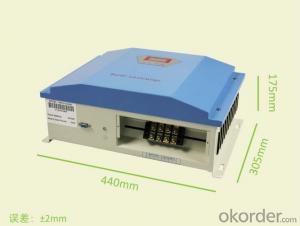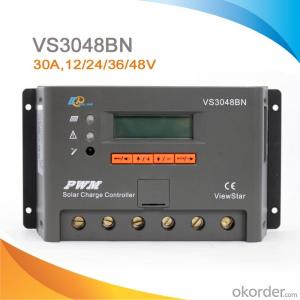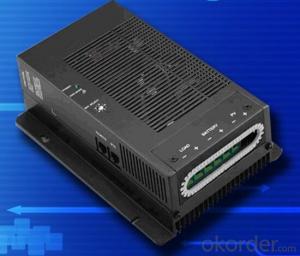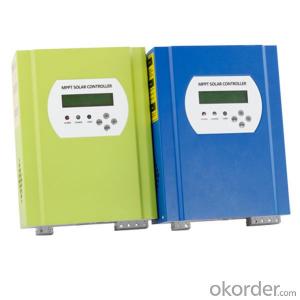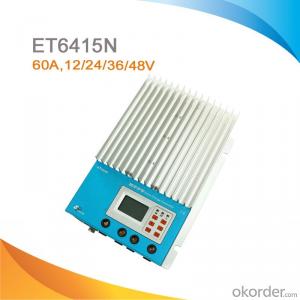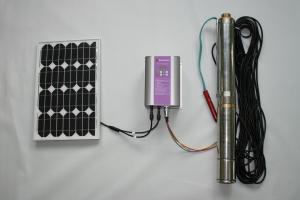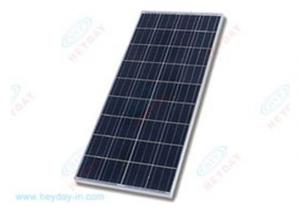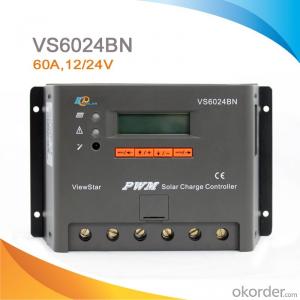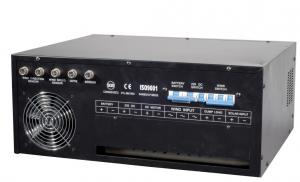PWM Solar Controllers - 10a/20a/30a MPPT Solar Controller, 12/24v Adjustable MPPT Solar Charge Controller with LCD Display
- Loading Port:
- China main port
- Payment Terms:
- TT OR LC
- Min Order Qty:
- 10 unit
- Supply Capability:
- 100000 unit/month
OKorder Service Pledge
OKorder Financial Service
You Might Also Like
1. General Description
This solar streetlight controller is specially designed for small-scale off-grid solar generation system. It is applicable to the solar hybrid streetlight system, solar monitor system and so on. The equipment could control solar cells charging to battery safely and efficiently.
2. Functions & Features
Efficient MPPT Charging Mode
Battery Maximum Charging Current Smart Limiting
DC Output,6 Output Modes
Output Take Short Circuit Protection
Using or Not Using Solar to Charge to Battery Could be Set Manually
Using or Not Using Output Could be Set Manually
LCD Display Multi-level Menu; Intelligent Button Settings
Battery Over-discharge & Over-Charge Protection
3. Product Models
LSLM10A-12V | LSLM20A-12V | LSLM30A-12V |
LSLM10A-24V | LSLM20A-24V | LSLM30A-24V |
4.Our Services
We are specialized in solar controller , wind solar controller and inverter, all the components for off gird solar power system. Any OEM or ODM products will be welcomed anytime.
5. FAQ
Q. How many with the MOQ?
A.100PCS
Q, What is the payment method:
A.T/T,L/C
Q, how long with the date of order
A. About 15-25 Days
Q. Where are you main market?
A. Our main market is South Africa and we provide more service to Southeast Asia, Middle East and South America.
Q: What are your certification?
A.CE, ISO, CCC
Q: How long with your warranty.
A. We offer inverter, solar lighting , solar generator one-years warranty ,Sola panel warranty 20 years.
Q: How about with you scale of factory ?
A.We are bigger OEM ( Original Equipment Manufacturer). We have 500 workers and managers .
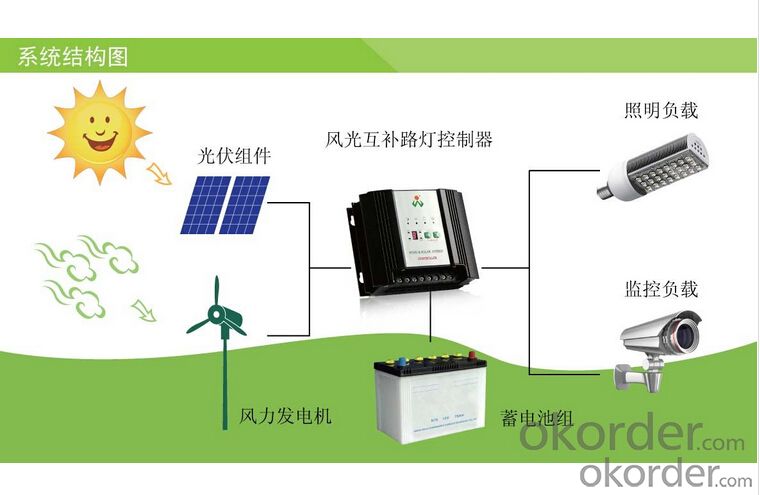
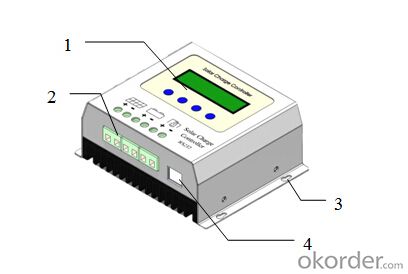
- Q: Can a solar controller be used in off-grid applications?
- Yes, a solar controller can be used in off-grid applications. In fact, it is an essential component in off-grid systems as it regulates the charging and discharging of batteries, ensuring optimal energy storage and utilization from solar panels. The solar controller helps to prevent overcharging, over-discharging, and other potential issues, making it a crucial component for off-grid power systems.
- Q: Can a solar controller be used in a solar-powered research station in Antarctica?
- Yes, a solar controller can be used in a solar-powered research station in Antarctica. A solar controller regulates and optimizes the charging and discharging of batteries in a solar power system, ensuring efficient energy management. Given the abundant sunlight available in Antarctica during summer months, installing a solar controller would be crucial in maximizing the utilization of solar power and maintaining a stable energy supply for the research station.
- Q: How does a solar controller handle battery voltage regulation?
- A solar controller handles battery voltage regulation by monitoring the voltage level of the battery and adjusting the charging current accordingly. It helps prevent overcharging by reducing the charging current when the battery reaches a certain voltage threshold and also prevents deep discharge by cutting off the load when the battery voltage drops below a certain level.
- Q: Can a solar controller be used with solar panel RV mounts?
- Yes, a solar controller can be used with solar panel RV mounts. A solar controller is an essential component in a solar power system as it regulates the charging of the batteries connected to the solar panels. Whether the solar panels are mounted on an RV or any other structure, a solar controller ensures that the batteries are properly charged and protected from overcharging or discharging. Therefore, it is recommended to use a solar controller with solar panel RV mounts to optimize the performance and longevity of the batteries.
- Q: What is the maximum voltage that a solar controller can handle?
- The maximum voltage that a solar controller can handle varies depending on the specific model and manufacturer. However, in general, most solar controllers can handle voltages up to 150V or higher. It is important to check the specifications of the particular solar controller being used to determine its maximum voltage capacity.
- Q: How does a solar controller work?
- A solar controller, also known as a charge controller, regulates the flow of electricity between the solar panel and the battery. It ensures that the battery is charged efficiently and protects it from damage due to overcharging or overdischarging. The solar controller monitors the battery's voltage and adjusts the charging current accordingly. It also prevents reverse current flow from the battery to the solar panel during low or no sunlight conditions. Overall, a solar controller helps optimize the performance and lifespan of the battery in a solar power system.
- Q: What is the maximum operating altitude of a solar controller?
- The maximum operating altitude of a solar controller can vary depending on the specific model and manufacturer. However, in general, most solar controllers can operate effectively at altitudes up to approximately 4,000 meters (13,000 feet) above sea level. It is important to consult the manufacturer's specifications for the specific solar controller in question to determine its maximum operating altitude.
- Q: Can a solar controller be used in a solar-powered refrigeration system?
- Yes, a solar controller can be used in a solar-powered refrigeration system. A solar controller is a device that regulates the flow of electricity from solar panels to the batteries or electrical loads. In a solar-powered refrigeration system, the solar controller helps manage and optimize the power generated by the solar panels, ensuring that the refrigeration system operates efficiently and effectively. It helps protect the batteries from overcharging, ensures proper voltage levels, and helps maximize the use of solar energy in the system.
- Q: Can a solar controller be used with solar-powered greenhouse ventilation systems?
- Yes, a solar controller can be used with solar-powered greenhouse ventilation systems. A solar controller helps regulate and optimize the charging and discharging of batteries in a solar-powered system, ensuring efficient use of solar energy. By using a solar controller, greenhouse ventilation systems can effectively manage the power generated from solar panels and operate the ventilation system accordingly, maximizing energy savings and maintaining optimal greenhouse conditions.
- Q: Can a solar controller be used with solar panels of different manufacturers?
- Yes, a solar controller can typically be used with solar panels from different manufacturers. Solar controllers are designed to regulate the charging of batteries from solar panels, and they typically have universal compatibility with various panel brands and models. However, it is important to ensure that the solar controller is compatible with the voltage and current ratings of the solar panels to avoid any potential damage or inefficiency. It is always recommended to consult the manufacturer's specifications and guidelines to ensure compatibility and optimal performance.
Send your message to us
PWM Solar Controllers - 10a/20a/30a MPPT Solar Controller, 12/24v Adjustable MPPT Solar Charge Controller with LCD Display
- Loading Port:
- China main port
- Payment Terms:
- TT OR LC
- Min Order Qty:
- 10 unit
- Supply Capability:
- 100000 unit/month
OKorder Service Pledge
OKorder Financial Service
Similar products
Hot products
Hot Searches
Related keywords
